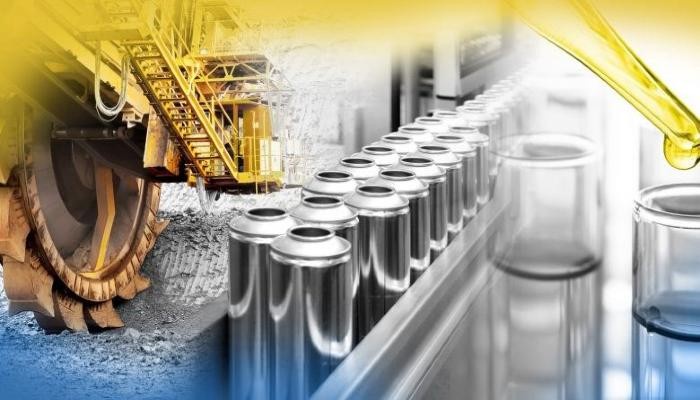Choosing the proper lubricant is essential in the mining sector since heavy machinery works there under harsh circumstances, preventing optimum performance, extending the life of the equipment, and maximising operational effectiveness.
Choosing the best lubricant can be challenging given the variety of alternatives available. Considerations must be made for things like equipment type, working conditions, temperature, and load requirements. In this post, we'll look at the essential procedures for assisting you in choosing the ideal lubricant for your mining operation.
Understand Your Equipment
Gaining a thorough knowledge of your mining equipment is the first step in choosing the appropriate lubricant. Different pieces of machinery, including excavators, haul trucks, loaders, and crushers, need different levels of lubrication. To determine the recommended lubrication levels for each part and system, refer to the recommendations and guidelines provided by the equipment manufacturer. In order to calculate the proper viscosity and performance needs of the lubricant, consider variables like speed, load, and temperature ranges.
Analyse the Operating Environments
Mining operations are conducted in a variety of settings, from dry deserts to icy tundra. In order to choose a lubricant that can endure the particular difficulties of your mining site, it is crucial to consider the working circumstances. Consider elements including extremes in temperature, humidity, dust, exposure to water, and chemical pollutants. The viscosity, oxidation stability, corrosion resistance, and anti-wear characteristics of the lubricant can all be impacted by these circumstances. Find lubricants that are especially formulated to function well under the specified operating conditions.
Identify Application-specialised Lubricants
Each mining application has a different need that must be satisfied by a specialised lubricant. For instance, different types of lubrication are necessary for hydraulic systems, gears, wire ropes, and open gears. Choose lubricants that are especially prepared for the important uses in your mining operation by identifying such applications. The protection and performance qualities needed by the equipment and its working circumstances will be provided by these application-specific lubricants.
Think about the Environmental Impact
Mining companies are emphasising sustainability more than ever as a result of growing environmental concerns. Consider the influence on the environment while choosing lubricants. Consider alternatives like biodegradable lubricants manufactured from sustainable materials. These lubricants reduce your mining operation's environmental impact while providing performance on par with traditional lubricants. To maintain compliance and advance ethical mining practises, choose lubricants that adhere to environmental standards and certifications.
Consult with lubricant suppliers
These companies specialise in comprehending the particular needs of the mining sector. Talk with reliable providers to learn more about the finest lubricant choices for your particular application. They can give technical support, suggest acceptable items, and offer perceptions based on their working knowledge of related mining activities. You can choose the best lubricants for your mining operation by working with lubricant providers to make educated judgements.
Examine Performance and Reliability
Before making a final decision, examine the performance and dependability of lubricants. Think about things like the lubricant's capacity to lessen wear and tear, minimise friction, and prolong equipment life. Lubricant and oil specialist Sinopec noted for you to choose lubricants, look for ones with superior thermal stability, corrosion resistance, and anti-wear qualities. Examine the lubricant's compatibility with the seals, gaskets, and other components of your equipment that are often utilised. Review the lubricant's past performance, including client references and case studies, to determine its dependability and efficiency in comparable mining operations.
Implement a Lubrication Management Programme
It's important to set up a reliable lubrication management programme once you've chosen the right lubricants for your mining operation. This programme needs to include correct handling techniques, planned lubricant changes, routine oil analysis, and equipment inspection. The manufacturer's suggested maintenance schedules and procedures should be followed to maximise the advantages of the chosen lubricants and enhance equipment performance.
Consider Equipment Compatibility
It's crucial to take compatibility with the equipment's current lubrication system into account when choosing lubricants for your mining operation. Certain lubricant types can be subject to limitations or requirements for usage with certain equipment. Considerations like seal compatibility and interactions with other lubricants that are currently in use should be made. To make sure the oil you choose is suitable with your equipment, consult the manufacturer's instructions or ask lubricant vendors for guidance.
Consider the overall Cost of Ownership
While considering the overall cost of ownership is vital, it is also necessary to consider the upfront cost of lubricants. Think about the possible cost savings and long-term advantages that a high-quality lubricant can provide. Considerations including longer equipment life, less downtime, more energy efficiency, and lower maintenance costs should be made. Long-term savings and a reduced total cost of ownership can come from a lubricant that provides improved performance and durability.
Prioritise Safety and Health
Mining operations place a high priority on safety and health, and the choice of lubricant should follow these guidelines. Consider elements including the lubricant's toxicity, flammability, and volatility. It can be required to use lubricants with low toxicity, decreased fire dangers, or minimal environmental effect in specific circumstances, such as tight spaces or locations with rigorous safety rules. To protect the environment and the health of your staff as well as your workers, think about the safety and health consequences of the selected lubricant.
Analyse the performance data produced by the equipment
This data includes temperature ranges, load situations, and equipment behaviour. Examining this data can provide you important knowledge about how much lubricant your equipment needs. Consider the effects of temperature changes, high pressure zones, and wear-prone zones. This knowledge can aid in choosing lubricants that are suited to certain equipment requirements, enhancing performance, and averting possible problems.
Final words
It's important to carefully analyse equipment specs as well as other aspects when choosing the correct lubricant for your mining operation. Consider it an investment in the dependability and efficiency of your mining operation to choose the proper lubricant.


No comments yet